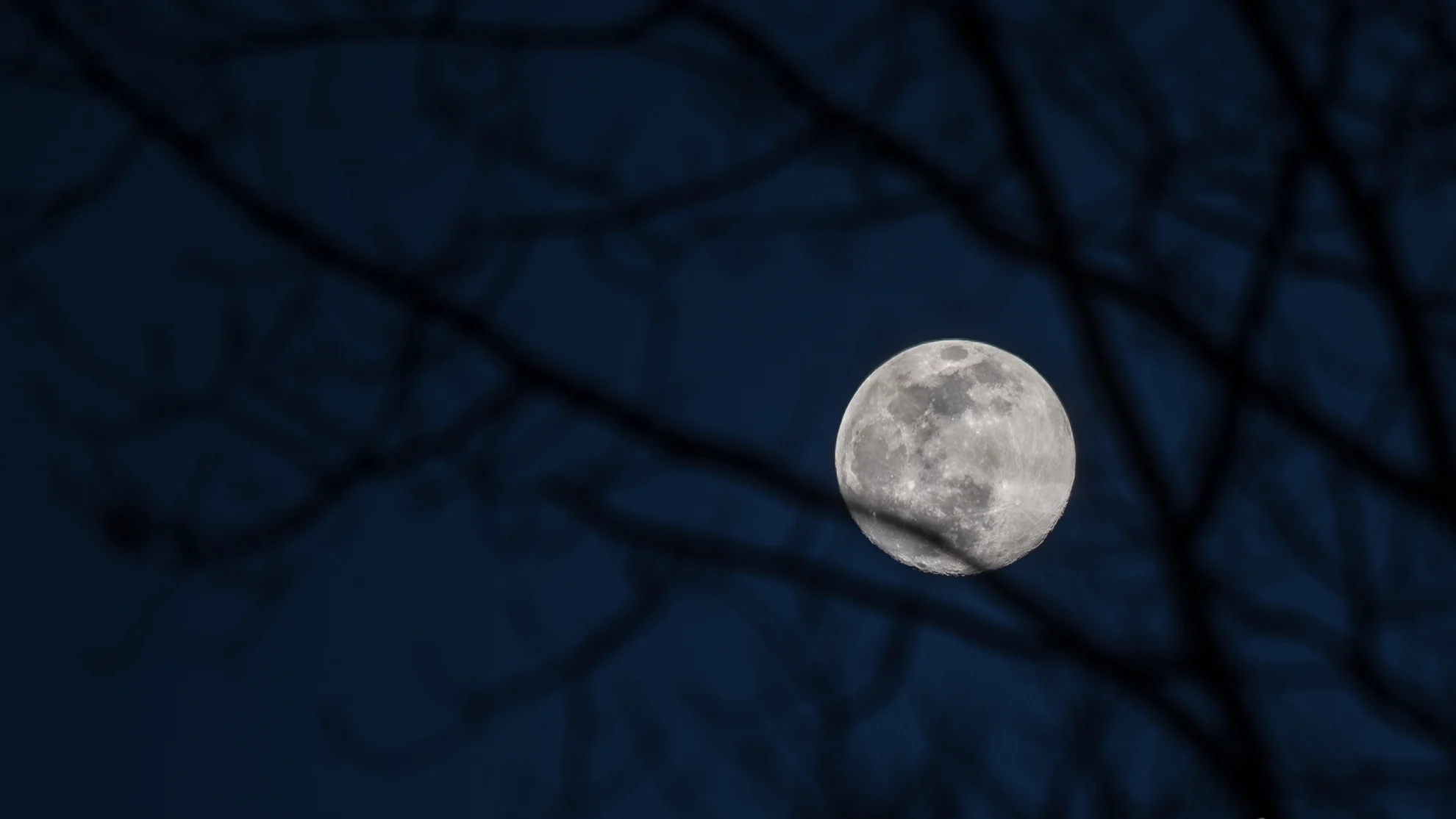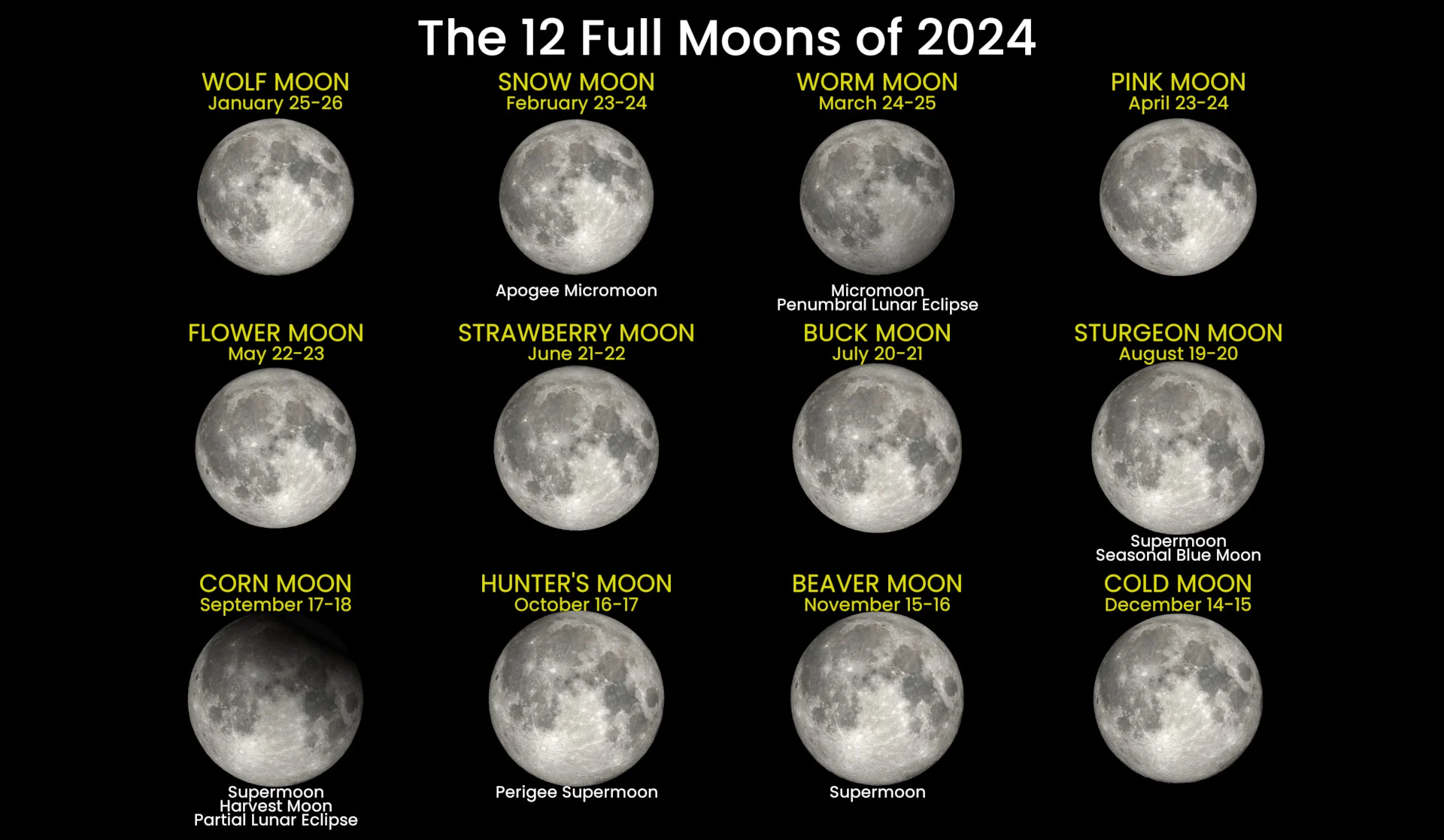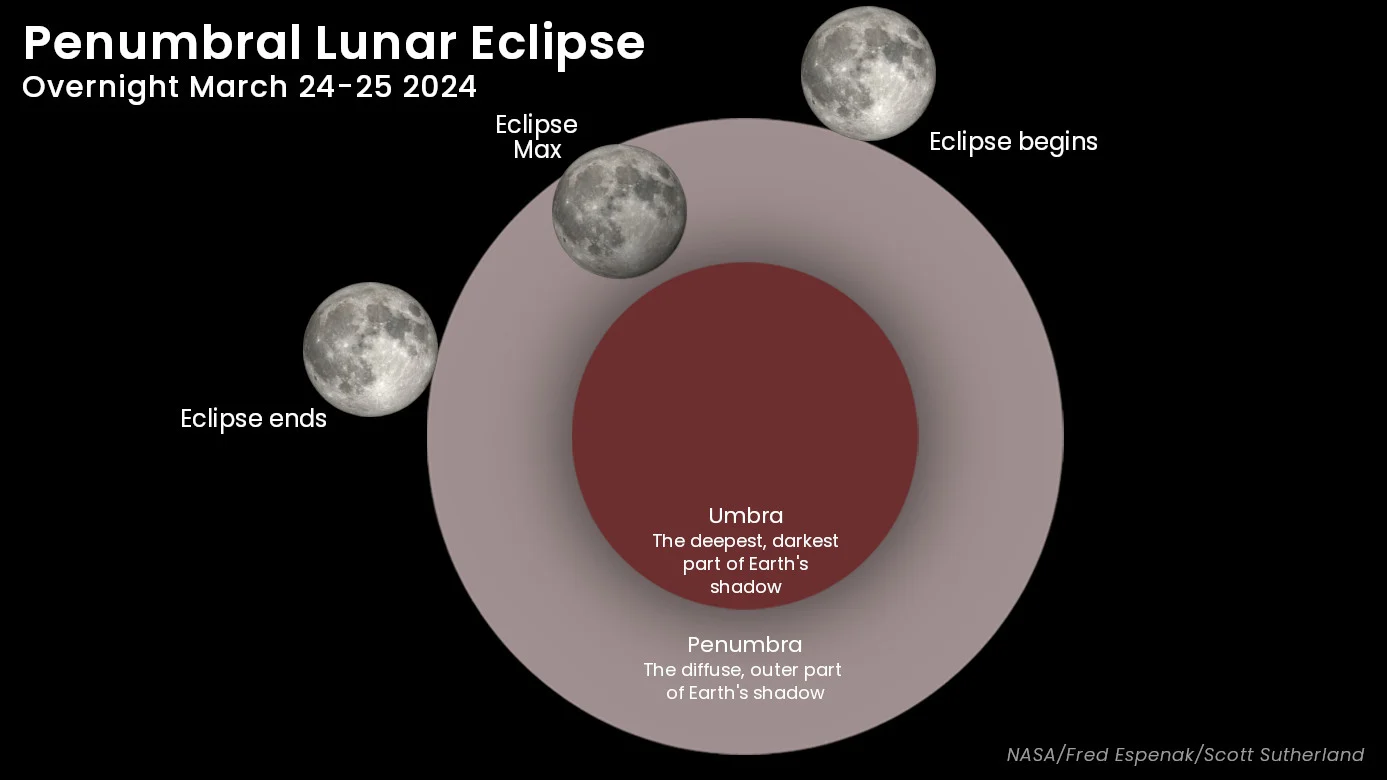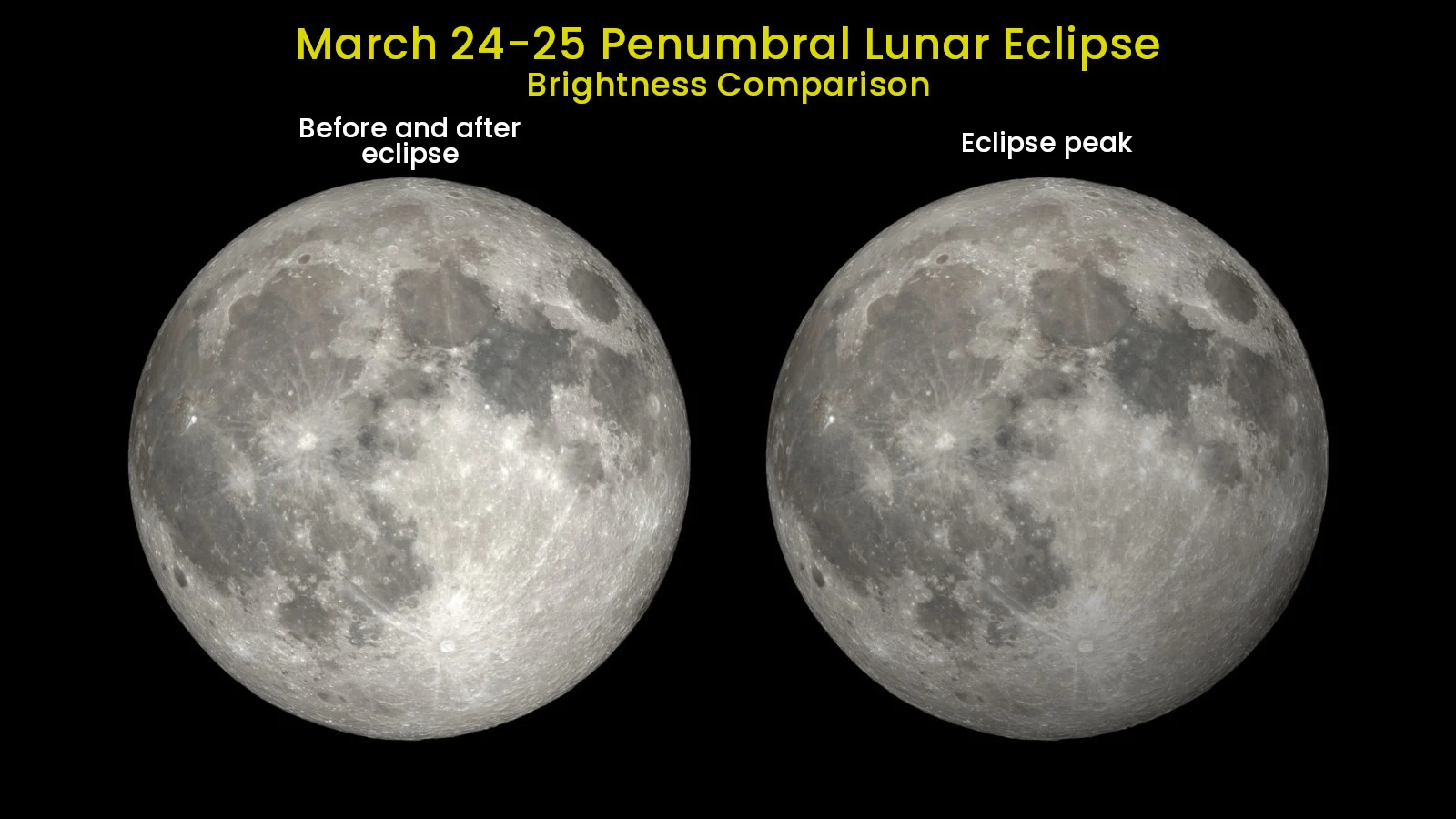
Nearly invisible lunar eclipse will dim Sunday night's Worm Moon
Can you spot this astronomical prelude to the April 8 solar eclipse?
If you have clear skies Sunday night, pause for a moment to take in the Full Worm Moon. Looking at just the right time, keen-eyed observers may even spot the edge of Earth's shadow cast on the lunar surface as our planet lines up with the Sun and Moon to produce a penumbral lunar eclipse.
On the night of March 24-25, 2024, the Full Moon will be up all night long, rising around sunset and setting near dawn.
Check your local forecast to see if sky conditions in your area will be right for viewing the night sky.
READ MORE: April 8 solar eclipse is the must-see celestial event this spring
What is a 'Worm Moon'?
Over a century ago, the publishers of the farmer's almanac gathered together a list of names, one for each of the 12 Full Moons of the year. Some of these names were collected from European or Colonial folklore. Most were adopted from the lunar calendar used by First Nations peoples living in what is now the Northeastern United States.

This graphic collects all the relevant data about each of the 12 Full Moons of 2024 — their date, popular name, whether they are a 'super' or 'micro' Moon, a perigee or apogee Full Moon, and whether they are remarkable in some other way (Lunar Eclipse, Blue Moon, or Harvest Moon). Credit: NASA's Scientific Visualization Studio/Fred Espenak/Scott Sutherland
According to this list, the March Full Moon is most commonly known as the Worm Moon.
"For many years, we thought this name referred to the earthworms that appear as the soil warms in spring," The Old Farmer's Almanac stated on their website.
"However, more research revealed another explanation," they added. "In the 1760s, Captain Jonathan Carver visited the Naudowessie (Dakota) and other Native American tribes and wrote that the name Worm Moon refers to a different sort of 'worm' — beetle larvae — which begin to emerge from the thawing bark of trees and other winter hideouts at this time."
Some First Nations peoples named this Full Moon and the roughly 29-day 'lunation' that follows it, after animals, such as the goose (the Haida), the eagle (the Cree), the frog (the Omaha), or the crane (the Potawatomi). For others, the name signified the time when they hunted moose (the Abenaki) or caught specific species of fish (the Algonquin). The various Sioux people, such as the Assiniboine, Dakota, Lakota, and Nakota named it the "sore eyes moon" — referring to the snow blindness that comes from sunlight reflecting off the bright ice that forms as old snow slowly settles and melts into a hard surface.
DON'T MISS: Are you ready for the April 8th Total Solar Eclipse? Here's how to prepare
Penumbral lunar eclipse
Coming up on Monday, April 8, the Earth, Sun, and New Moon will line up to produce a Total Solar Eclipse. Throughout the day, the Moon's shadow will sweep across North America, including locations in Canada from southwestern Ontario to Newfoundland.
As a prelude to that spectacular event, a similar alignment will occur on the night of March 24-25, except this time it will be with the Full Moon.

The path of the Full Worm Moon through the edge of Earth's shadow on March 24-25, 2024. Credit: NASA/Fred Espenak/Scott Sutherland
Unlike some of the amazing lunar eclipses we've witnessed in the past few years, this one will be quite challenging to see.
"Now, the more spectacular variety of lunar eclipses happens when the Moon passes through Earth's inner shadow, or umbra. That's when we see a dark 'bite' taken out of the Moon, or in the case of a total lunar eclipse, a reddish, so-called 'blood moon'," NASA said. "Penumbral eclipses cause only a slight dimming of the Moon's brightness, so if you're not looking for it, you might not know there was an eclipse happening. But if you glance at the Moon early in the night, and then later, around the peak of the eclipse, you might notice the difference in brightness."

This comparison shows the difference between the Full Moon before and after the eclipse, and at the eclipse peak, when the Moon will be only about 90 per cent as bright. Credit: NASA/Scott Sutherland
According to NASA, the Full Moon begins its trek through Earth's penumbra starting at around 12:53 a.m. EDT on Monday, March 25 (2:23 a.m. NDT/9:53 p.m. PDT).
The eclipse reaches its peak at roughly 3:12 a.m. EDT (4:42 a.m. NDT/12:12 a.m. PDT). At that time, with around 95 per cent of the Moon immersed in this diffuse part of Earth's shadow, keen-eyed observers may notice that the south pole of the Moon is slightly darker than its north polar region.
The Moon will completely exit Earth's shadow, bringing the eclipse to an end, at just after 5:32 a.m. EDT (7:02 a.m. NDT/2:32 a.m. PDT).
Watch Below: See every phase of the Moon for 2024 in under 5 minutes
Thumbnail image courtesy Rachelle Mack, who shared this view of March 2023's Worm Moon from View Lake, Ont. in The Weather Network's UGC gallery.










